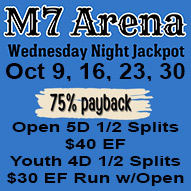By Richard G. Godbee, Ph.D., for AQHA Corporate Partner Farnam
Dehydration has a profound and immediate impact on the well-being of a horse, more so than the lack of any other nutrient. To put it in context, the body can lose nearly all of its fat and more than half of its protein content and survive, but a loss of just 1/10th of the body’s water can result in serious consequences.
Feeding large amounts of hay or grain usually increases water needs. Conversely, horses grazing on lush, green pastures may meet most of their water requirements from the grass, as it may contain 60 to 80 percent water.
Exercise increases the amount of heat the horse must dissipate in order to function. Horses dissipate heat load primarily through evaporative cooling. Air movement also helps with evaporative cooling. While the horse will still lose heat via evaporative cooling at ambient temperatures greater than body temperature, high humidity severely depresses the evaporative efficiency.
To find out if your horse is at risk, add the outdoor temperature to the relative humidity. If the total is more than 150, there is a potential for overheating, and extra caution should be observed.
Signs of dehydration include a slow capillary refill time and a decrease in skin elasticity. To measure the capillary refill time, press your finger on the horse’s gums, then release your finger and determine how long it takes for color to return. Normal capillary refill time is 1.5 to 2 seconds.
Monitor the hydration status of your horse. Know his normal temperature, pulse and respiration. Remember that each horse is an individual.
Guidelines
Provide free access to palatable water. Cool water is preferred because the stomach empties faster.
During exercise, allow the horse to drink as often as possible.
After exercise, a hot horse should be cooled before being allowed free access to water.
Use running water to cool your horse during hot weather, especially if his sweat is thin or watery.
Provide salt to encourage adequate water consumption and help maintain electrolyte balance. If pastured, one to two ounces per day is good.
A powdered electrolyte is a good choice to use when adding electrolytes to the feed. If a quality electrolyte is not available, a mixture of table salt and lite salt in equal amounts may be used.
Give your horse free access to salt even when using electrolytes.
It cannot be over-emphasized to supply sufficient water any time you give electrolytes.
Read more great horse health tips on America’s Horse Daily.





